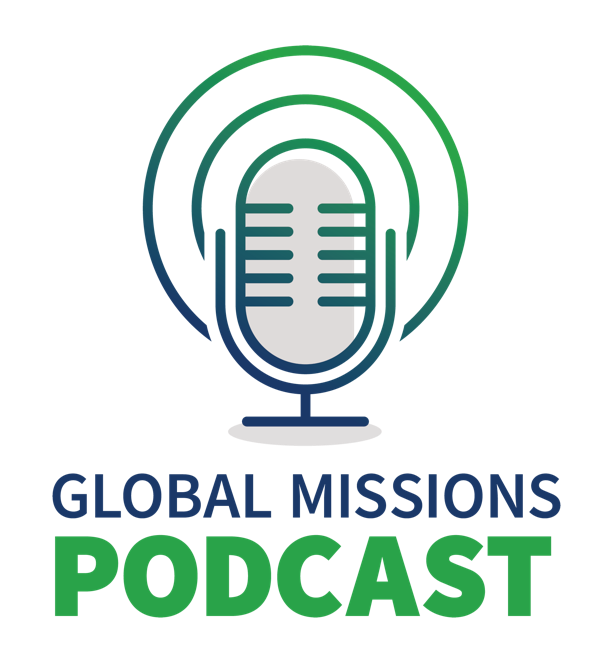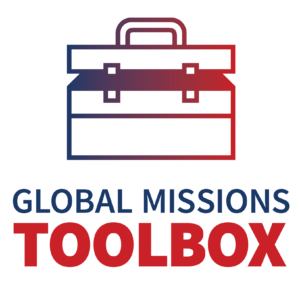
012: How to Create a Mission Strategy
Nov 2, 2015
Ellen Livingood, founder and director of Catalyst Services, describes for us the importance of missions priorities and strategies in local churches, the basics of developing priorities and strategies and how to communicate them effectively to your congregation.
Podcast: Download
Ellen Livingood is the founder and director of Catalyst Services – an organization that provides resources and consulting and training to mission agencies and to local churches. She has a background in communications, mission administration and partnership development. For 13 years she was the Director of Global Outreach at Grace Point Church in Newton, Pennsylvania. Her passion is to strategically engage the church’s untapped potential with today’s amazing global opportunities.
Before we get into the topic, can you give us a brief history of who you are and how you’ve come to be passionate about missions?
- Grew up in a home that was passionate about missions.
- About 20 years ago saw new opportunities to work with the global church as it was exploding and saw so many opportunities for people to get involved in missions through technology and travel.
- If the Apostle Paul were living today, I think he would be very excited about these opportunities!
- We have a lot of opportunity and a lot of responsibility as we look at these opportunities.
- Goal is to help churches steward these opportunities and resources well.
Explain to us what is a mission strategy and why is it important for a church to have a mission strategy?
- Uses the terms ‘priorities’ and ‘strategies’
- ‘Priorities’ – the big picture – what is God calling your church to do? What major impact has he gifted and prepared your church to do? What are you trusting God to accomplish?
- ‘Strategies’ – the way that you get to the big picture – the ‘wheels’
- Priorities and strategies complement each other
Featured Resource:
Resources are provided as recommendations only.
Show Links:
If the Apostle Paul were living today, I think he would be very excited about these opportunities!
Can you give us an example of where you’ve seen this at work?
- A few years ago, College Church in Illinois looked at the global needs and opportunities and were moved by the fact that over 2 billion people in the world don’t have an opportunity to hear the gospel. This became their first priority.
- Their strategy was to identify the places that have the greatest unreached populations and to send people to those locations.
- Their second priority was global leadership training. 85% of pastors and church leaders in the developing world don’t have formal training. In their congregation they had a number of theology teachers and so they partnered with a number of seminaries around the world and worked together to train pastors.
- Their third strategy was to powerfully mobilize their people – 50% of our adult members participate in an STM, 25% of our people on care teams and 10% of their congregation going out as missionaries.
- Metrics and measurements are important in determining if we are succeeding.
Does every church need priorities and strategies and if so, why?
- Every church has them but they aren’t always easy to express or identify. Churches that are denominational have allowed their denominations to take over the mission leadership. Churches involved in faith missions have left priorities and strategies to individuals, waiting for individuals to come to them asking for prayer and financial support.
- In the past decade or so, we have had a significant number of churches that have looked at this model and deemed it inaccurate.
- Acts 13:1-3 – illustrates how God uses the local church in the sending process and we cannot give away this responsibility to others
- Congregations today aren’t excited about a long list of missionary names – it’s not motivating. People want a more hands-on approach.
- Churches are asking important questions such as, “What are we accomplishing?” as they look at how money, effort and resources are being spent.
- If you want to change missions, you need to have a holy dissatisfaction with the way things are. Many churches are dissatisfied with how they are currently using their skills and abilities. Making changes, doing things in new ways and thinking about strategies and priorities can be complicated and messy.
Their third strategy was to powerfully mobilize their people – 50% of our adult members participate in an STM, 25% of our people on care teams and 10% of their congregation going out as missionaries.
Who should be involved in the creation of a church’s mission priorities and strategies?
- Mission advocates have looked to the pastors and the elders and see that they aren’t engaged or excited about missions.
- Everybody wants the pastor to wave their flag and be excited about what they are passionate about.
- When the vision comes from the outside, it does not connect with the hearts of the pastoral staff and it doesn’t grow organically.
- It’s really important that every church says, “We want to bring our leaders into the process from the very beginning so that it integrates the church’s vision.” This increases the ownership of the process.
- Churches should make sure that all adult ages are represented in the conversation. Sometimes leaders tend to represent older generations, with a low representation of the younger generation. You want to hear from both groups.
Congregations today aren’t excited about a long list of missionary names – it’s not motivating. People want a more hands-on approach.
What are some of the main pieces to be considered in creating a mission strategy?
- Defining what missions includes and doesn’t include. The world has come to us – some of the most unreached people in the world have moved into our neighbourhoods. Are we going to say that missions is cross-cultural?
- Acts 1:8 – to be God’s witnesses all around the world – Jesus was clearly teaching us that we need to have a focus on everything from our back door to the ends of the earth. We need to incorporate that in our strategy and vision.
- One of the challenges is that we need to recognize that those ends of the earth piece is usually the hardest. We need to keep pushing towards the ends of the earth and this might take more proactivity than other pieces of the strategy.
Tell us a little bit about the material that you’ve prepared.
- Catalystservices.org
- Five Steps towards Global Engagement – a short document that lays out where to start, focusing on the big five pieces.
- Another short piece that talks about the ‘how’s and the comparative ways that we talk about strategy
- A manual is available called, “Your Focus on the World.” It walks your church through the process of thinking through strategic initiatives. There are trained facilitators who are prepared to help walk your church through the material in the manual.
One of the challenges is that we need to recognize that those ends of the earth piece is usually the hardest. We need to keep pushing towards the ends of the earth and this might take more proactivity than other pieces of the strategy.
Once a group of people have put together these priorities and strategies, how do you communicate it well to the congregation so that everyone has ownership of the priorities and strategies?
- Create a one sentence statement summarizing the strategy that is catchy, that everyone can remember.
- Offer a one page description with graphics and pictures
- 3 or 4 page document that gets more into the background, that includes Scriptural background – this will help your leaders understand the vision and provides continuity as leaders change.
- One of the exciting things about communicating this that we have people in our congregation is that we have people in marketing and social media and PR. Recruit them to help your church market the mission strategy.
- Repeat, repeat, repeat. Keep sharing the vision.
- People want to know, “What can I do now? And will this be contributing to something bigger in the future?”
How can people learn more?
- Catalystservices.org – There is all kinds of resources on the website for free.
- Email them at info@catalystservices.org
- Sign up for a monthly newsletter that highlights upcoming trainings and resources







